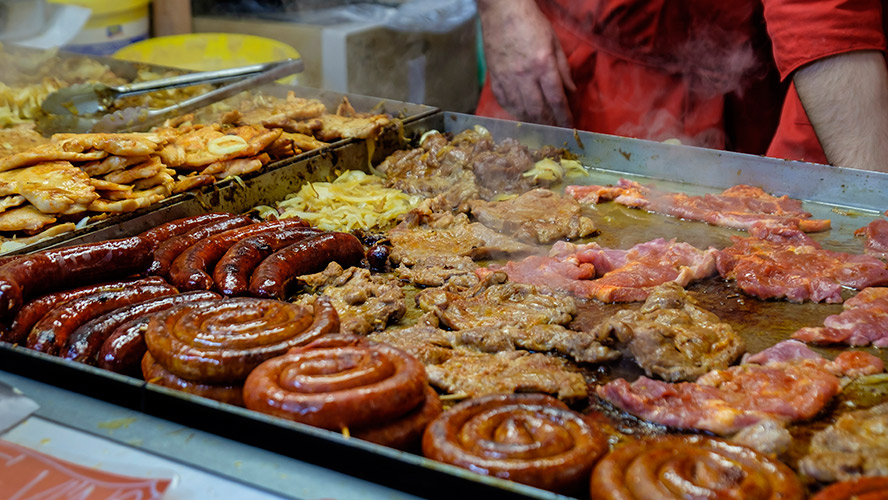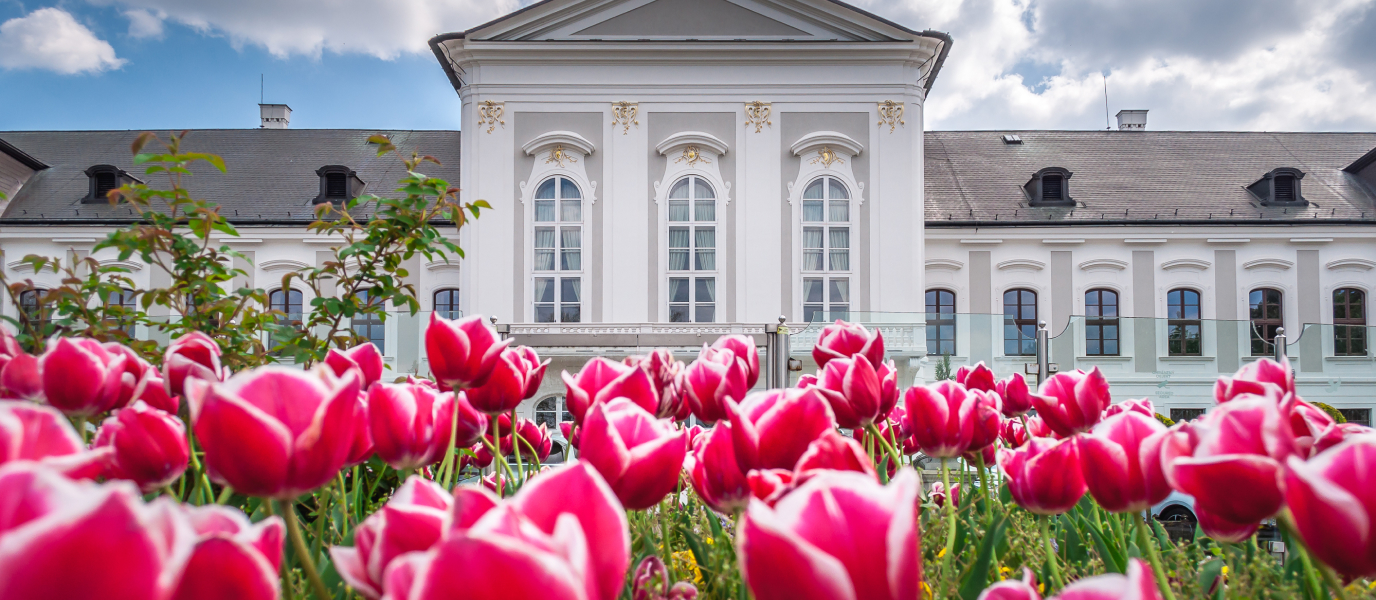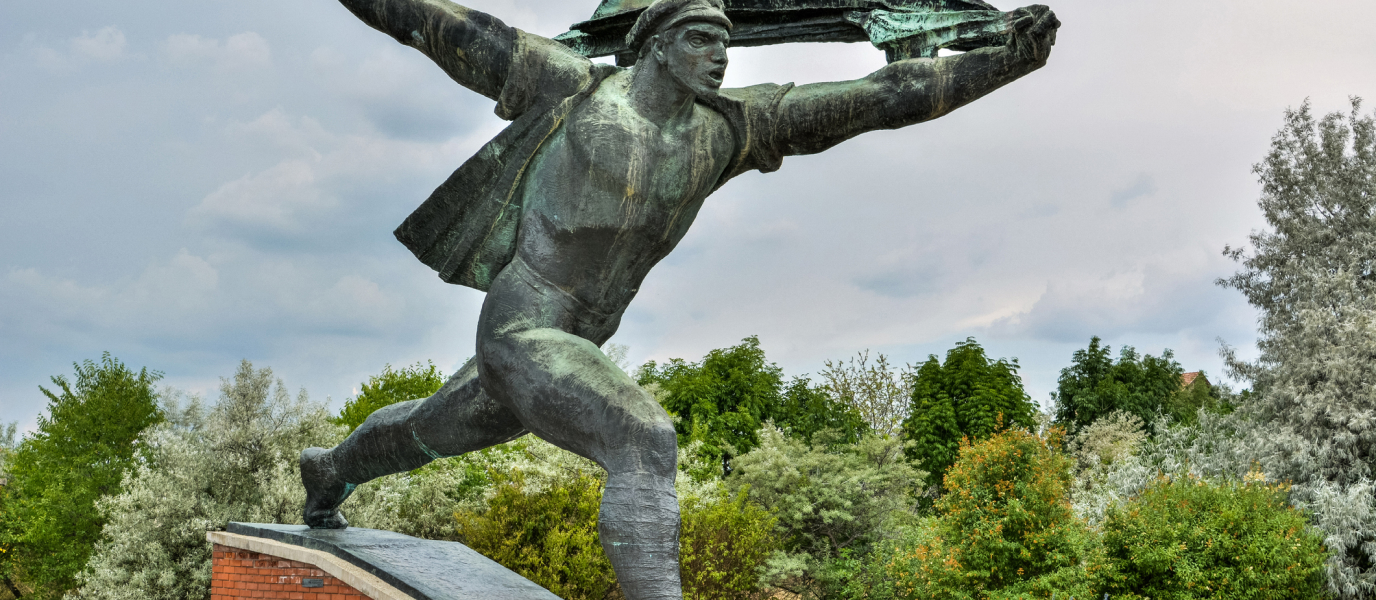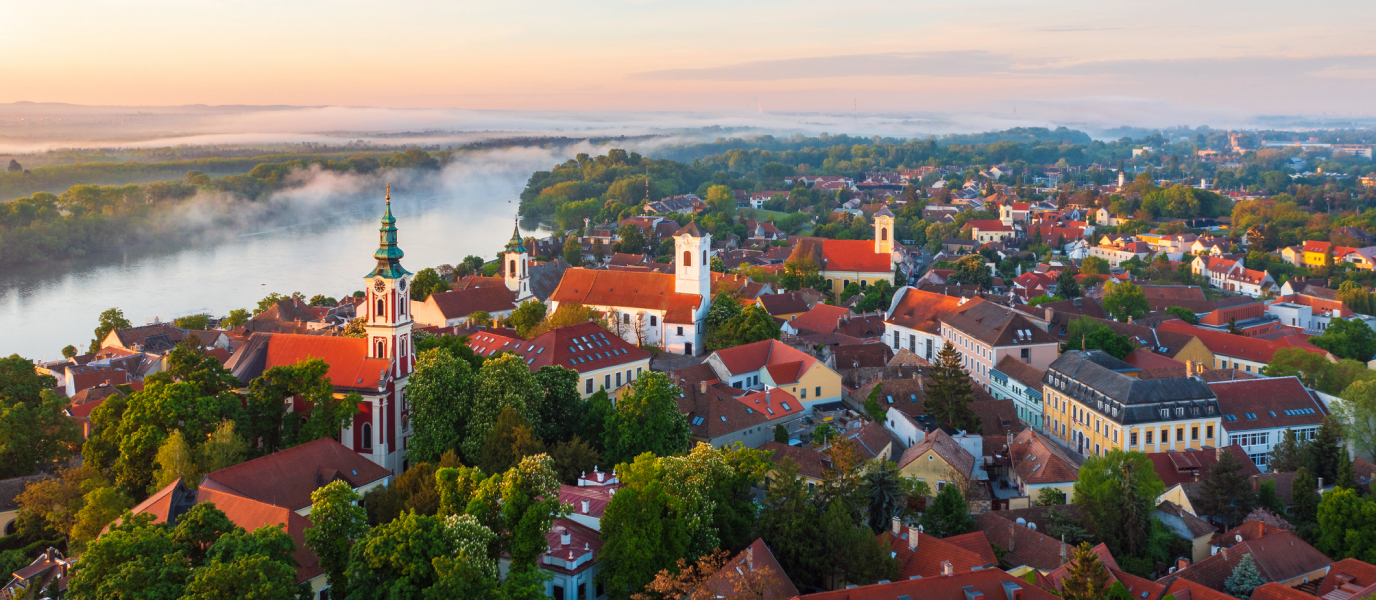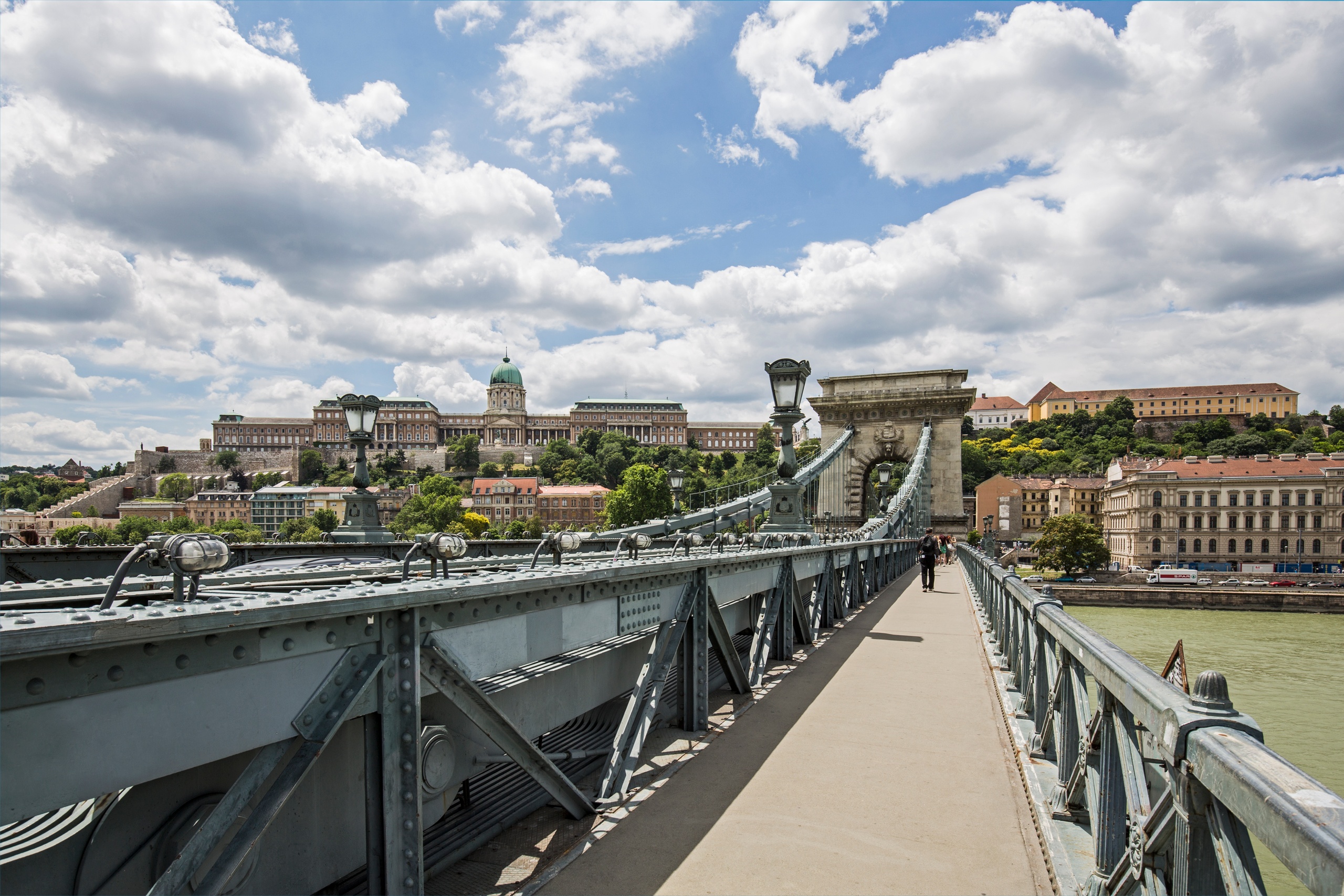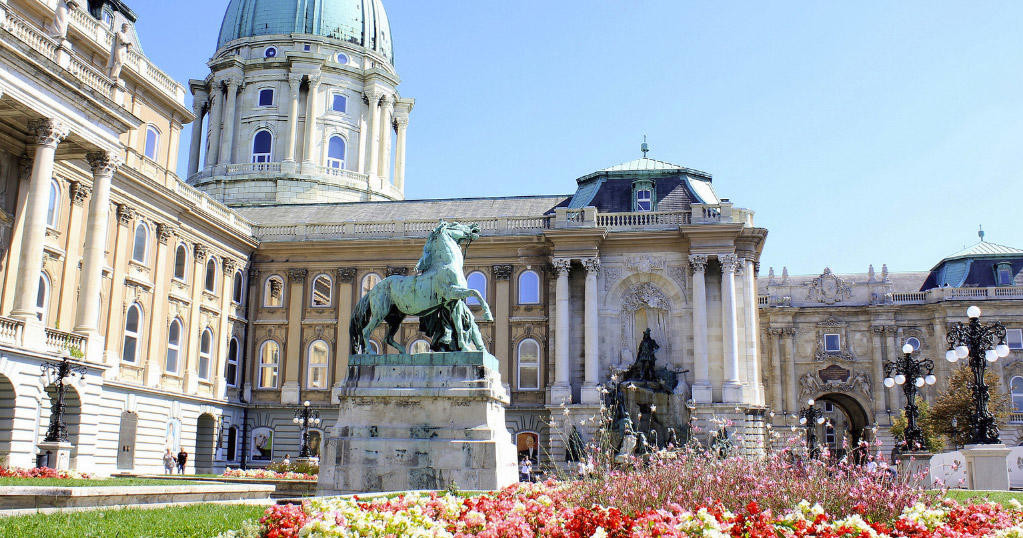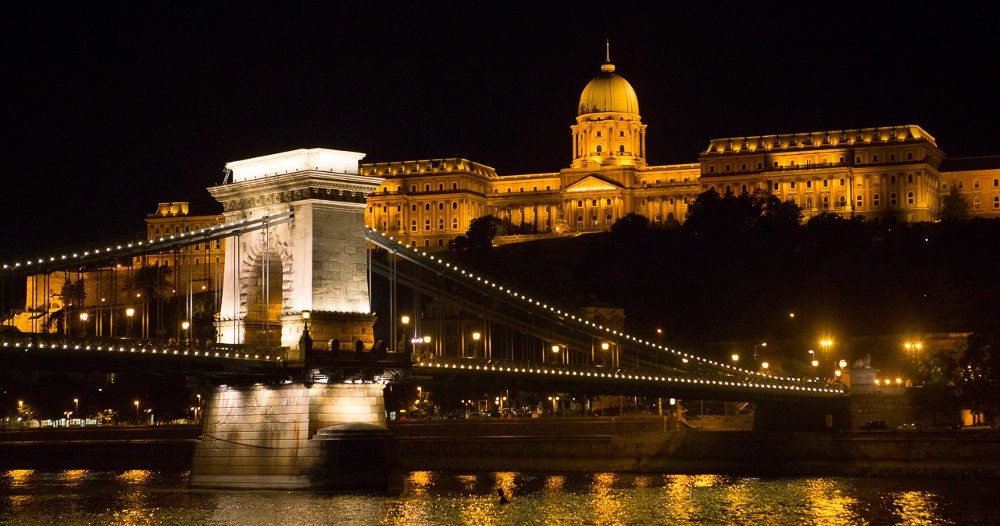Without the shadow of a doubt, Bratislava offers plenty of interesting attractions. Compared with its neighbours, Vienna, Prague and Budapest, Bratislava’s wealth and historic heritage may seem small, but nobody can deny that this medium-sized city has great charm, thanks to its privileged position on the banks of the Danube.
It is also worth knowing that this city was crucially important to the Austro-Hungarian Empire and, in fact, between the sixteenth and nineteenth centuries it was here that the coronation of monarchs took place.
The ideal length of stay to get to know Bratislava would be three days and two nights, but even a day is sufficient to get a good impression of the city. Below, we give you detailed information on what you can see and do on a trip to Slovakia’s capital city.
Bratislava Castle
Without question, Bratislava Castle is the city’s main attraction in terms of monuments. Perched on a hill overlooking the city, the castle dates back to the tenth century. However, the vicissitudes of history caused its destruction and it was reconstructed in later centuries. The castle owes its current appearance to a reconstruction undertaken during the 1960s, inspired by the structure of the building during the eighteenth century.
It is the country’s principal edifice for institutional and representative purposes, and it was here that Slovakia’s independence was ratified in 1992. The castle complex is the official residence of the President of the Republic, and also houses the Museum of the History of Bratislava and the Treasure Chamber.
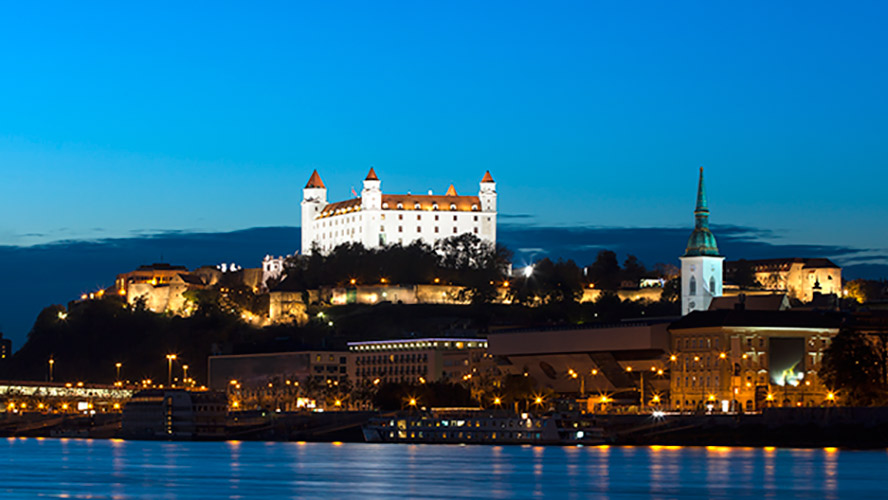
The Blue Church
Perhaps the most outstanding feature of this church is the shade of pastel blue in which it is painted. But that is by no means all: the Church of St Elizabeth is full of surprises and exquisite decorative and architectural details. In fact, the architect who built it early in the twentieth century, Ödön Lechner, is known as the Hungarian Gaudí, and this work is pure Art Nouveau in style.
Externally, the church’s appearance is characterised by softness and symmetry in its arches, columns, cupolas, and bell tower; the interior where the colour blue continues to predominate, is equally impressive. Beneath the high altar lie the remains of the church’s patron, St Elizabeth, along with those of St Clement of Rome, St Vincenta and St Theodora.
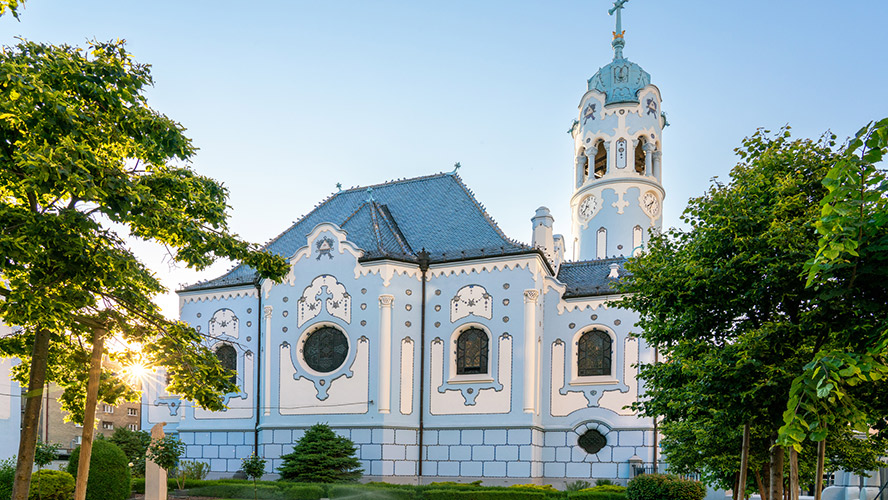
St Michael’s Gate
This is the bastion, albeit much changed from the original, of what was once the wall surrounding the medieval city of Bratislava. The origins of this gate, one of four entrances to the city, date back to the early fourteenth century, and its current appearance reflects the refurbishment undertaken in the mid-eighteenth century, which is clearly Baroque in style. This project saw the addition of the 53-metre-tall clock tower, which is topped with a cupola in the characteristic onion shape so often found in Central Europe.
The building erected around the original medieval gate houses the Museum of the City of Bratislava, which tells the story of the fortification, and displays some of the weapons used in its defence.
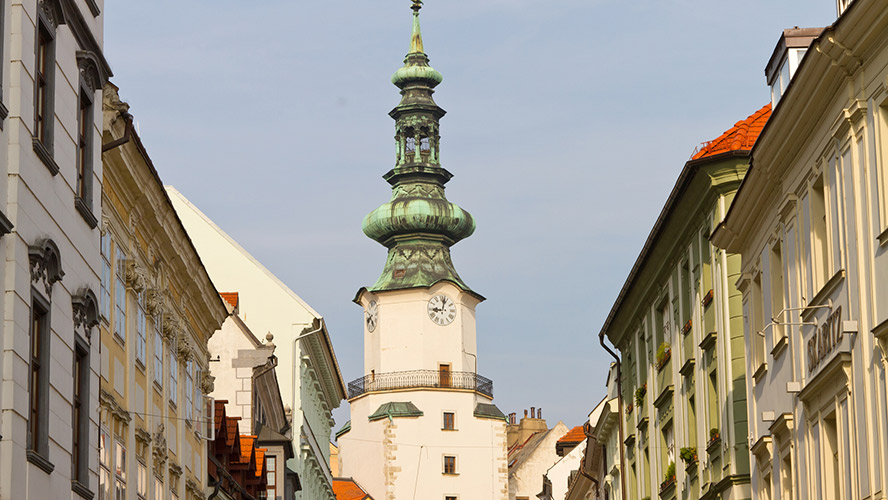
Bratislava Cathedral
The patron of this late-thirteenth-century church is St Martin, and the building has undergone several changes over time, following various disasters — including a lightning strike which destroyed the bell tower.
The present church is 85 metres tall, and at its highest point is an impressive replica of the crown of St Stephen. The crown weighs 300 kilos and is a reminder that this was once the church in which the Hungarian monarchs were crowned. This tradition endured for almost 300 years, until 1830.
Although this is a fairly austere building from an aesthetic point of view, it is well worth going inside to see the crypt, where some of the country’s most notable figures are buried. These include some of the noble Pálffy family and various important religious figures.
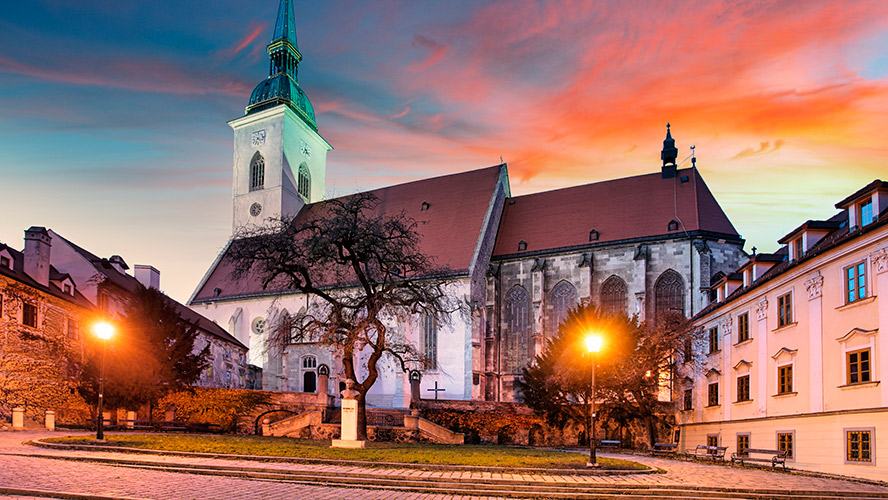
Bratislava’s historic centre
The historic nucleus of Slovakia’s capital is relatively accessible if you want to explore it on foot, and corresponds with what was once the walled city. However, you can also explore in a more comfortable fashion, on board the trams that cross and encircle it.
This area is where you will find most of Bratislava’s best-known historic buildings, some of the most outstanding of which (apart from those already mentioned), are the Old Town Hall, the Grassalkovich Palace, the Trinity Church and the National Theatre.
Bratislava’s historic centre also has a riverside walk along the Danube, and apart from its tourist attractions and official edifices (it is the location of the head offices of the main state and local institutions), it is also a residential area. To the west of this area, it is very pleasant to stroll up the hill to the castle and Horský Park.
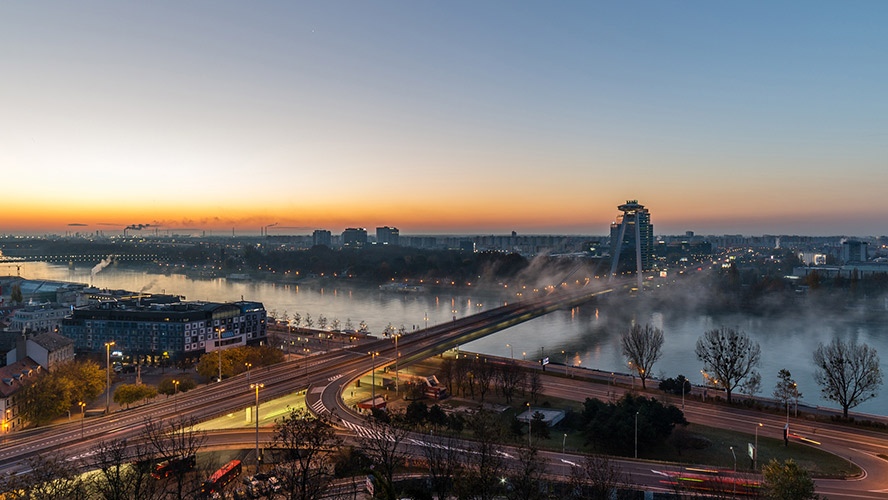
Where to eat in Bratislava
Bratislava offers many excellent options for eating well; most of the cuisine is Central European, but there are some establishments serving international dishes. For example, Soupa Bistró (Kozia, 11), which offers a wide range of soups, along with substantial traditional Slovak cooking. On weekdays they offer a very reasonably priced set menu at lunchtime.
Another interesting option is the Meštiansky pivovar (Devrevená 575/8), a historic brewery where, in addition to sampling the various types of beer, you can try the most typical local dishes, with an emphasis on pork.
An eclectic, fun mix is on offer at the Mecheche Snack Bar (Nedbalova 453/12), the closest thing to a tapas bar to be found in Bratislava. In fact, some of the dishes are deliberately designed to resemble Spanish tapas, as well as Italian, Mexican and Peruvian snacks.
